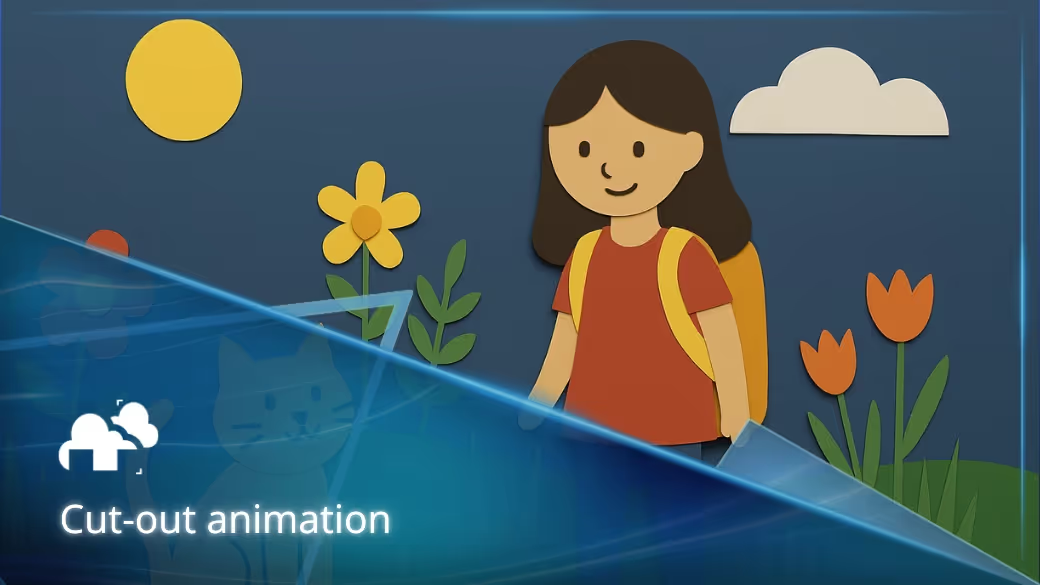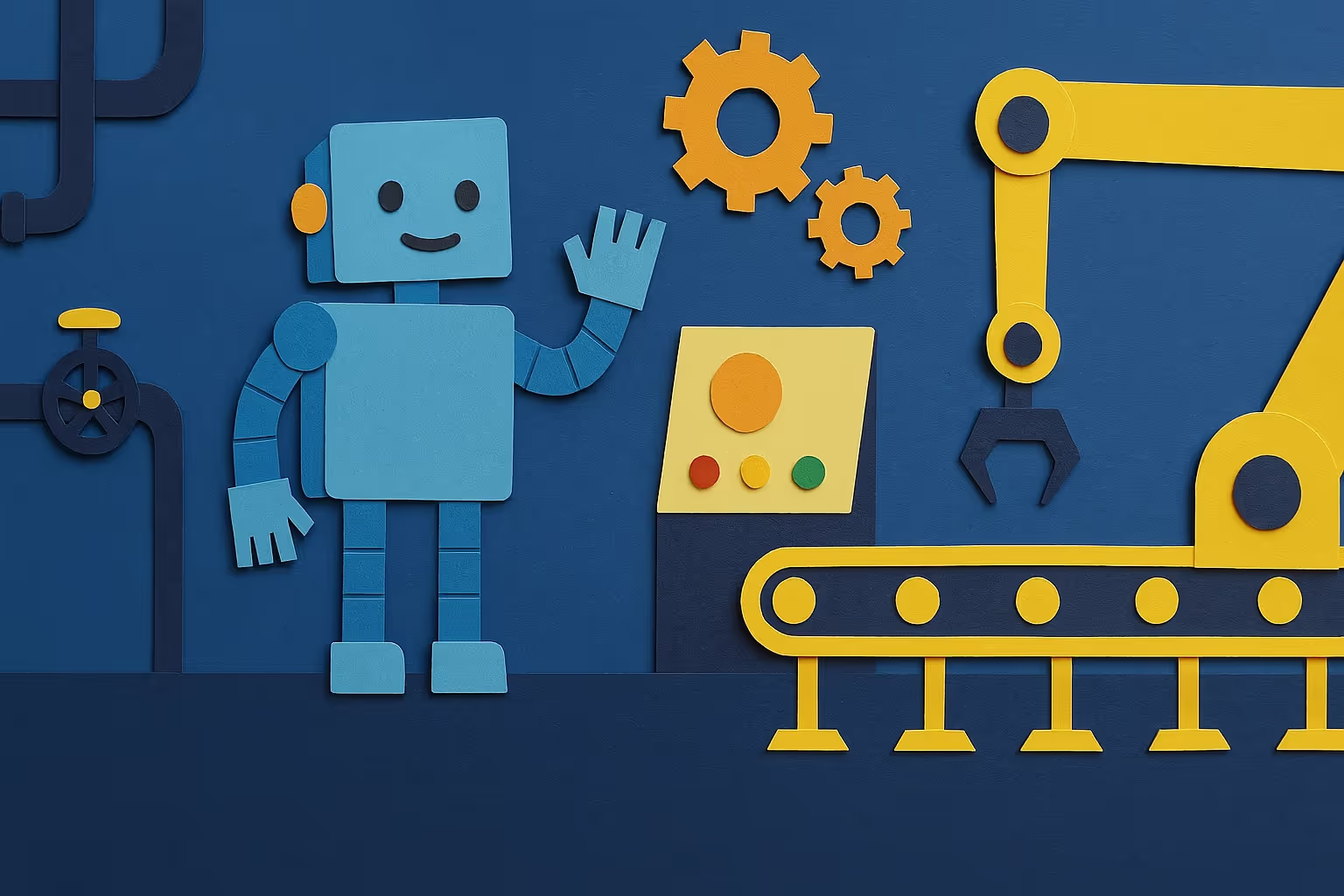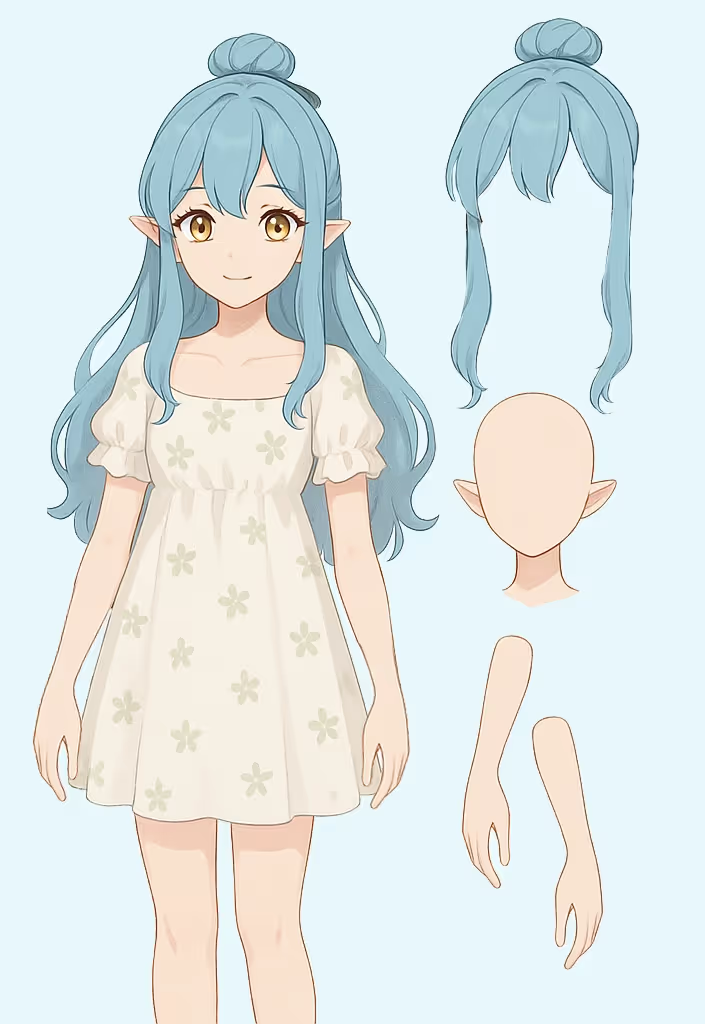
Cut-out animation has been a part of visual storytelling for over a century, from early silhouette films by pioneers like Lotte Reiniger to contemporary productions such as South Park’s pilot episode. Known for its combination of handcrafted techniques and practical production methods, it remains relevant in today’s media landscape. In 2025, the approach continues to be used across a range of projects, supported by creators and brands that value its distinct aesthetic and efficient workflow.

Cut-out animation, originating over a century ago with pioneers like Lotte Reiniger, has evolved from purely physical silhouette films into hybrid physical-digital workflows. In 2025, it thrives in TV (e.g., Peppa Pig), online channels (Kurzgesagt), and social media thanks to its handmade aesthetic, low cost, and adaptability to short-form content. The style’s strengths are speed, asset reusability, and small-team production, while its main limits are restricted movement and workarounds for complex actions. A resurgence is fueled by demand for authentic visuals, affordable tools, and hybrid techniques. The future likely involves more AI assistance, VR experiments, and sustainable digital-physical blends, proving the method remains both practical and creatively potent.
German animator Lotte Reiniger brought cut-out animation into the public eye with her 1926 feature The Adventures of Prince Achmed, using intricate silhouette puppets inspired by shadow play. Over time, the technique evolved and was embraced by innovators like Terry Gilliam in the 1970s, who applied collage-style cutouts for surreal comedy in Monty Python’s Flying Circus.
Today, computers have transformed production, allowing for faster workflows, cleaner composites, and hybrid styles that combine tactile assets with digital rigging.
In 2025, demand for animation styles with a handcrafted or less polished appearance is increasing, particularly in contrast to highly rendered 3D and vector-based visuals. Cut-out animation offers this aesthetic while remaining relatively cost-efficient to produce. Its straightforward production process also aligns well with short-form, looping content formats on platforms such as TikTok, Instagram, and YouTube, making it a practical choice for both commercial and independent projects.
Cut-out animation shaped cinema’s early history by showing that flat, handcrafted figures could tell complex stories, as seen by different artists and innovators. Its cost-effective methods and distinctive style influenced later stop-motion techniques and helped establish animation as a recognized art form.
In Argentina, Quirino Cristiani used cut-out techniques for La intervención en la provincia de Buenos Aires, one of the first animated shorts though the film itself is now lost. His political satires laid groundwork for animation in South America long before cel animation took over.
Reiniger’s silhouette animation remains one of the most technically and artistically significant works in the medium. Her cutout puppets, hinged at the joints, moved with remarkable fluidity, inspiring generations of animators.
In the late 1960s and 70s, Gilliam introduced magazine clippings and absurd juxtapositions, bending cut-out animation into surreal satire. His work demonstrated the technique’s comedic and experimental potential.
Before cel animation became the standard, Japanese studios employed paper cut-outs to tell stories efficiently, influenced by economic pressures. These early experiments likely elevated the pacing and framing techniques that later shaped anime.
Cut-out animation differs from other animation techniques, from its technical process, materials, and more:
In traditional cut-out animation, each character or prop is adjusted between photographs, often using pins, rivets, or simple joints to allow for movement. The process is meticulous but requires fewer drawings than cel animation as elements can be reused rather than redrawn for each frame, though it allows for more limited movement. With this, cut-out animation can require less time and budget depending on the project complexity and the production workflow.
Physical cut-out animation uses paper, cardboard, photographs, or textiles. Digital cut-out animation replicates this with tools like Adobe Animate, After Effects, or Toon Boom Harmony. Many productions now also scan physical assets for digital manipulation, creating a hybrid workflow.
Cut-out animation is characterized by a flat, layered appearance. Movements are often limited or slightly uneven due to the technique’s frame-by-frame process, and the use of paper or printed materials introduces visible textures that contribute to its overall visual identity.
Cut-out animation and 3D animation differ both in process and visual style. Physical cut-out animation requires manually creating and photographing each asset, while digital cut-out workflows still involve detailed preparation and some frame-by-frame manipulation. In contrast, 3D animation uses virtual models that can be rigged and animated more fluidly once created. While 3D excels at complex motion and perspective shifts, cut-out animation offers a tangible, handcrafted aesthetic that 3D can only approximate through stylized rendering techniques.
There are various steps involved when it comes to doing cut-out animation, and they can slightly differ depending on the approach:
Start by designing characters and props, then cut and assemble them with movable joints. Create a background, arrange the set, and use a camera mounted overhead or at a fixed angle. Lighting should be even and consistent to avoid flicker.
With After Effects, animators can use the puppet pin tool to simulate jointed movement. Adobe Character Animator allows for real-time performance capture with a cut-out style. Toon Boom Harmony offers advanced rigging specifically for cut-out characters.
Many modern productions photograph hand-made elements, then animate them digitally. Some studios even integrate 3D-printed parts into stop-motion rigs, merging dimensionality with the cut-out aesthetic.
Music videos such as Talking Heads’ And She Was and modern TikTok animations highlight the technique’s continued potential for viral, shareable content. These works show how cut-out animation adapts to different eras and platforms while retaining its distinctive appeal.
South Park began with actual paper cutouts before transitioning to software that replicated the original handmade look. Its consistent visual style has become part of its brand identity and a defining feature of modern television animation. Meanwhile, various shows like Peppa Pig utilizes cut-out animation techniques with digital tools.
A key reference point for surreal visual humor, blending collage techniques with absurd storytelling. They influenced generations of animators and continue to inspire experimental motion graphics.
A popular YouTube channel known for its educational, visually engaging videos on science, technology, and other complex topics. The channel’s videos make use of digital cut-out animation techniques that go well with its visuals and context.
Although the majority of the global animation market is computer-generated, cut-out animation is gaining traction in advertising, education, and indie filmmaking. It offers potential lower production costs and a recognizable style that appeals to audiences fatigued by overly polished digital visuals. Hybrid mixes and digital cut-out animations are also well known, with the most popular use being Vtuber rigging of 2D models.

Cut-out animation is experiencing a resurgence in 2025 due to a combination of cultural and practical factors. The growing preference for handmade-looking art has boosted its appeal, while its suitability for short, looping formats makes it well-suited to social media platforms. Affordable tools and materials have also lowered the barrier to entry, encouraging more independent creators to adopt the style. At the same time, studios and educators are promoting the technique for its artistic value and versatility across different types of projects.
Cut-out animation delivers emotional impact through its tangible, tactile look. It works for brand storytelling, explainer videos, and social media campaigns. Because assets can be reused and modified, it’s also cost-efficient over multiple campaigns.
Expect to see AI-assisted workflows and continued hybridization with other animation forms. It is possible to see interactive experiences in VR in storybook formats or others, but it is still niche and not as widespread as other animation forms. Sustainability is also a growing factor, with digital tools reducing material waste while retaining the look of physical craftsmanship. As Terry Gilliam put it:
"The whole point of animation to me is to tell a story, make a joke, express an idea. The technique itself doesn’t really matter. Whatever works is the thing to use. That’s why I use cut-out. It’s the easiest form of animation I know."
In 2025, that advice feels more relevant than ever. Whether on a streaming platform, in a classroom, or across a brand’s social media feed, cut-out animation continues to prove that creativity drives the best stories.